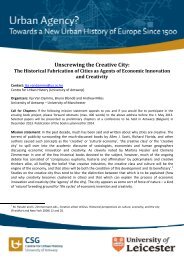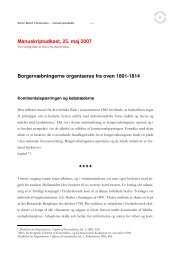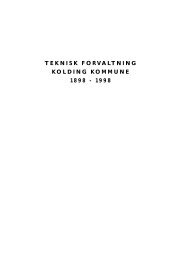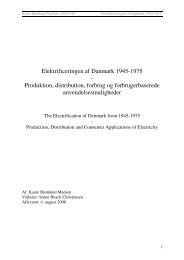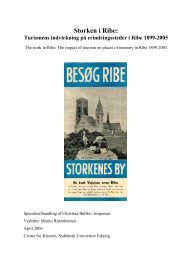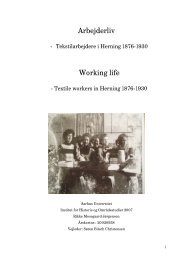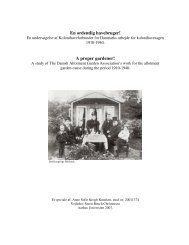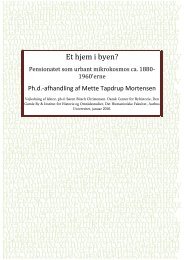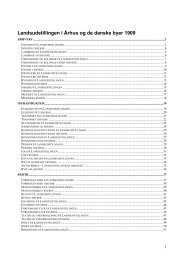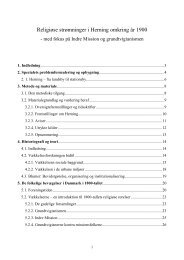Kongernes købstadsbesøg - Dansk Center for Byhistorie
Kongernes købstadsbesøg - Dansk Center for Byhistorie
Kongernes købstadsbesøg - Dansk Center for Byhistorie
Create successful ePaper yourself
Turn your PDF publications into a flip-book with our unique Google optimized e-Paper software.
population’s homage during the royal visits. Civic guards were standard tribute to the king<br />
during royal visits, thereby rein<strong>for</strong>cing the perception that the majesty’s main<br />
responsibility was maintaining his role as the leader of the military. The military<br />
inclination of the monarch and the people’s expectations to him is in line with Danish<br />
society in the 18 th century. The kingdom was one of the most militarized countries in<br />
Europe compared to its population ratio. The navy was second only to Britain, and seen in<br />
relation to the population ratio, the Danish army was only surpassed by Prussia.<br />
There were also other celebrations of the royal entries such as triumphal arches,<br />
illuminations with pictures and songs. These revealed a perception of the monarchy as<br />
constituting a third of the universal triad: God, king/dynasty and territory. This was<br />
enshrouded in the fashionable ancient symbol of immortality, the pyramid. This made the<br />
king an indispensable part of society with a theocratic legitimisation. Thereby the<br />
particular personal character of the absolute king became less important.<br />
Christian 8 th was king during turbulent times in the Danish history. Absolutism<br />
was coming to an end, and liberals in both Denmark and the duchies were demanding a<br />
free constitution. This, however, Christian 8 th could not grant, fearing it would tear the<br />
country apart. At the same time, there were increasing hostilities between Danish and<br />
German oriented groups. The homage paid during royal visits also showed signs of<br />
inconsistency. Traditional <strong>for</strong>ms of homage, emphasizing the paternalistic king and God,<br />
were challenged by new ideas with the emphasis placed on contract thinking, exemplified<br />
through the love between monarch and inhabitants – a love that could be withdrawn. In his<br />
political life, as well as during his journeys, Christian 8 th tried to fulfil the people’s<br />
contradictive expectations. He emphasized both Herrschaft and Macht by showing interest<br />
in the conditions of the common people, and following up on local problems by using his<br />
Macht. But although he strived to meet the people’s expectations, his attempts were<br />
unsuccessful. His aristocratic preferences and intellectual air prevented him from gaining<br />
unconditional support, since he did not transmit equality as he was expected to.<br />
A few months after Christian 8 th ’s death, Denmark was given a free constitution,<br />
but at the same time the country was ripped apart by civil war. The constitution changed<br />
dramatically the status of the monarchy. The old prerogatives of power were taken away<br />
from the king. His Macht was substantially reduced although he initially was thought to<br />
play a political role. Up until the reign of Christian 10 th (1912-1946), this political position<br />
was slowly disappearing. This had profound impact on Christian 10 th ’s possibilities of<br />
power display. He could only transmit Herrschaft through his interest <strong>for</strong> the population’s<br />
98



